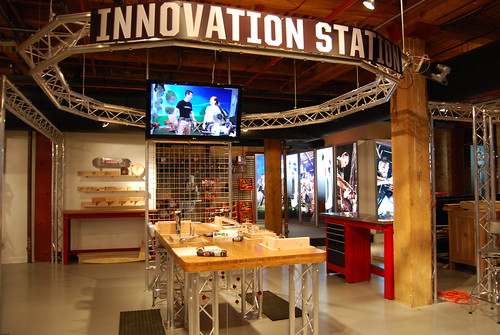Working with the power components of your house requires the right tools. This is not an area of home revision or heal where you want to wing it.
 Power Tools
Power Tools
Electrical contractors and electricians have their special tools of the trade. The tools needed for an electrical contractor fall into three major categories. They are basic wiring tools, theory installation tools, and testing equipment. The basic tool kit of the electrician will comprise many tools common to mechanical, plumbing, and household tool kits.

Screwdrivers and wrenches are needed, although the sizes tend to be smaller for an electricians tool kit than for the other trades. One special piece of equipment in the electrician's tool box is the blend wire stripper/cutter. This special tool is used in the preparation for wiring. The typical stripper has grooves for most common wire sizes. The end of the wire is inserted in the groove and the stripper is closed. When the wire is pulled out of the groove, the insulation will be removed leaving the fundamental wire exposed. The blend tool also is a wire cutter.
Installation tools are more costly and not regularly found in the median tool collection. These comprise special tools for bending and cutting conduit and tools designed for breaking straight through wall surfaces for the insertion of conduit. Other group of contractor tools enables the electrician to "pull" wire straight through enclosed areas. These are cable pulling or fish taping systems used in wiring.
Testing equipment is an important part of the contractor's tool assortment. There is a wide variety of testing equipment. The most common is the Digital multimeter. There was a time when a multimeter was something you would only expect a trained electrician to understand, but the digital multimeter is now something that unquestionably belongs in just about any home tool box. The most common function of the multimeter is to test circuit integrity. This is done by disconnecting power from an appliance and touching the negative and safe bet probes of the multimeter to each end of the circuit. If the resistance reading is zero, it indicates that the circuit is intact and will handle a current flow. The multimeter can test uncomplicated light bulbs in this manner. In the hands of an electrician, the multimeter can test much more than uncomplicated current.
A final group of equipment for an electrical contractor is safety related equipment. Electrical work has a high possible of danger. safety equipment is the most important part of any electrician's tool kit. safety equipment includes eye protection, electrician's gloves, and tagging equipment to insure that equipment is disconnected while work is being performed
proper Tools for Working with Electricity
No comments:
Post a Comment